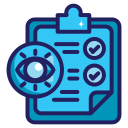Choosing the Right Chart for the Right Requirement
Traceability matrices are powerful yet dense. Turn them into heatmaps to spot orphan requirements, overburdened components, or test gaps instantly. Color intensity communicates risk and effort at a glance. Have you tried heatmapping coverage across epics? Share your setup and color scheme.
Choosing the Right Chart for the Right Requirement
Use bubble charts to compare value, effort, and uncertainty simultaneously. Complement them with Kano diagrams to classify must-haves, delighters, and indifferent features. Together, they guide backlog discussions without endless debates. Which axis labels help your executives grasp trade-offs in seconds?











